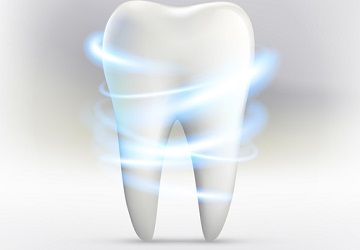New Dental Filling Could Replace Traditional Dental Amalgams
Professor Robert Hill of the Institute of Dentistry at Queen Mary University of London has presented the first scientific data examining a new type of dental filling that can be used to actively repair tooth decay.

Following recent assertions that traditional dental amalgam can increase mercury levels in the body, Professor Robert Hill of the Institute of Dentistry at Queen Mary University of London has presented the first scientific data examining a new type of dental filling that can be used to repair tooth decay.
The new data could be the first step toward permanent tooth restorative materials. The findings involve a new filling material composed of bioactive glass composite. This new material interacts with the body and provides minerals that replace those that are lost in the process of tooth decay. The bioactive glass composite actually releases fluoride, calcium and phosphate to the tooth into which they are placed, providing minerals necessary for repair.
Current dental amalgam fillings contain inert materials that do not help repair the actual tooth decay once they are inserted. The new bioactive glass composite does so while also filling in the cavity within the tooth, preventing any new decay from forming. Researchers hope that this new material will reduce the need for mercury-based amalgams, especially after recent research has placed tremendous pressure to do so on the dental industry.
As Hill explained, “not only did this bioactive glass composite remineralize the partially decayed teeth, but it also creates an alkaline environment that discourages the bacteria that caused the initial decay. The new bioactive glass also fills in the gaps with tooth mineral thus preventing the oral bacteria which cause tooth decay from establishing themselves. Research in the US suggests this will potentially prolong the life of fillings and slow secondary tooth decay because the depth of bacterial penetration with bioactive glass fillings was significantly smaller than for inert fillings."
The CEO of BioMin Technologies, Mr. Richard Whatley, said that his company has recently licensed the technology behind the new glass composite. The company’s goal is to take the remineralizing technology, formerly seen only in a type of toothpaste they produce, and develop it into restorative dental products. As he noted, “using this type of bioactive glass composite to fill cavities eliminates the need to use mercury based amalgam by offering aesthetic white fillings which help heal the tooth."
In the United Kingdom, where this research was conducted, over 80% of the population have at least one dental filling. The average number of fillings is seven per person, with eight million cavities being filled with amalgam every year.
ACTIVA BioACTIVE Bulk Flow Marks Pulpdent’s First Major Product Release in 4 Years
December 12th 2024Next-generation bulk-fill dental restorative raises the standard of care for bulk-fill procedures by providing natural remineralization support, while also overcoming current bulk-fill limitations.